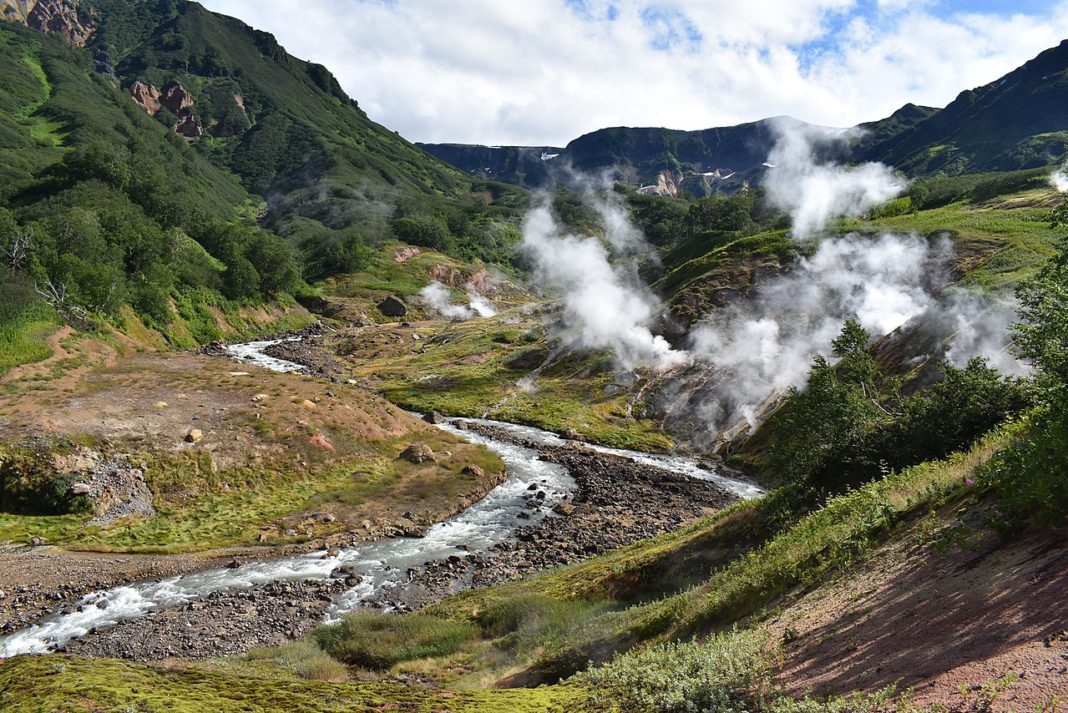This six-kilometer-long basin with approximately ninety geysers and many hot springs is situated on the Kamchatka Peninsula in the Russian Far East, predominantly on the left bank of the ever-deepening Geysernaya River, into which geothermal waters flow from a relatively young stratovolcano, Kikhpinych. Temperatures have been found to be 250 °C, 500 m below the caldera ground. It is part of the Kronotsky Nature Reserve, which, in turn, is incorporated into the World Heritage Site “Volcanoes of Kamchatka”. The valley is difficult to reach, with helicopters providing the only feasible means of transport.
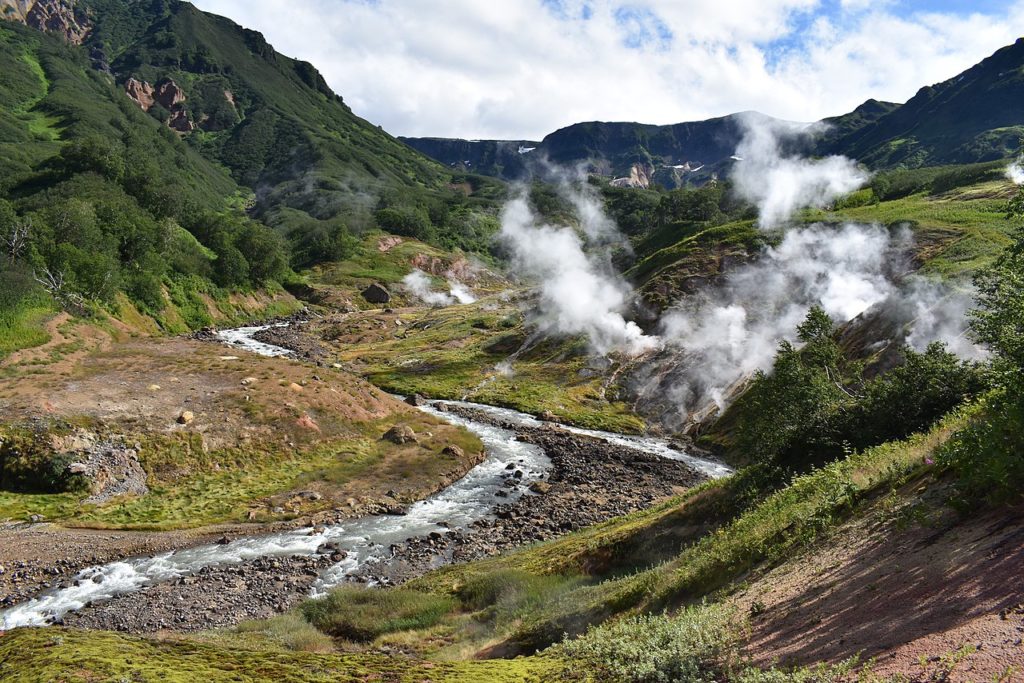
The Valley of Geysers was founded in 1941 and is one of the most prominent geographic discoveries of the 20th century which was committed by members of Kronotsky Nature Reserve, a geomorphologist, Tatyana Ustinova, and an inspector, Anisifor Krupnenin. This event can be named fortunate because initially, the goal of the hiking itinerary involved territory exploration only to find the sources of the Tikhaya and Shumnaya rivers.
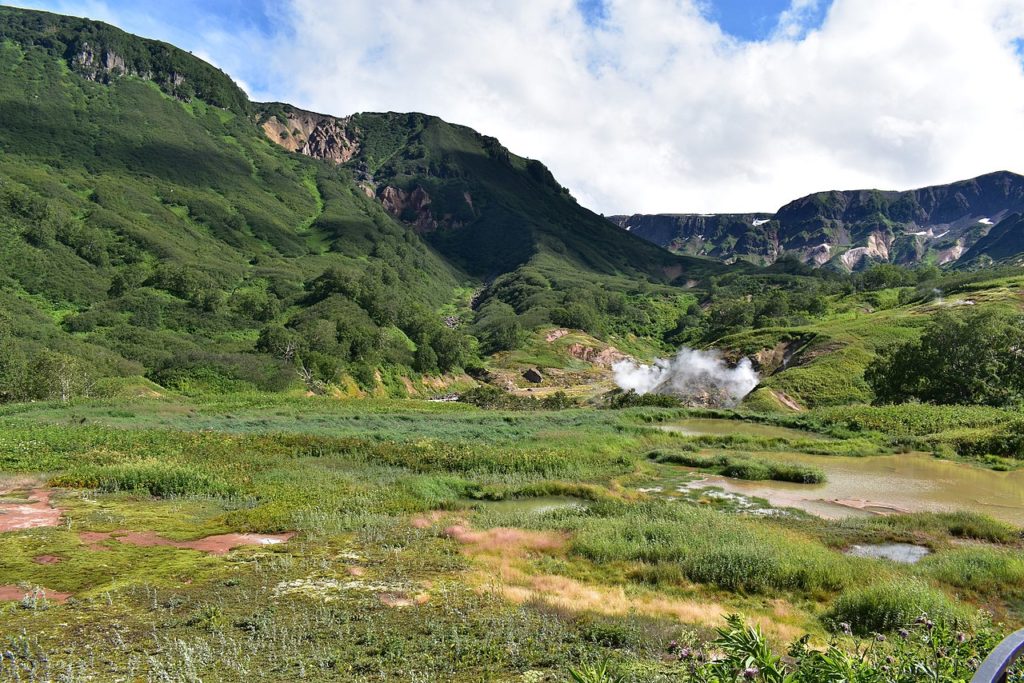
Geyser periodically erupts at their depth in the gushing form is a unique natural phenomenon of its kind, because thermodynamic conditions which are necessary for this kind of activity are relatively rare. There are only 5 enough large geyser areas all over the world. They are located in the USA, New Zealand, Iceland, Chile, and Russia.
The Valley of Geysers has numerous surface thermal manifestations which are connected to the Geyser hydrothermal system. Hydrothermal system presents the place of concentration of high-temperature underground water, which is located in a defined geological structure and heated by the thermal stream flowing from a magma chamber lying closer to the water. The feature of high-temperature water is its boiling at different levels of flow. Thus, it creates hot springs on the surface, as well as hot mud pots, steam vents, and geysers.
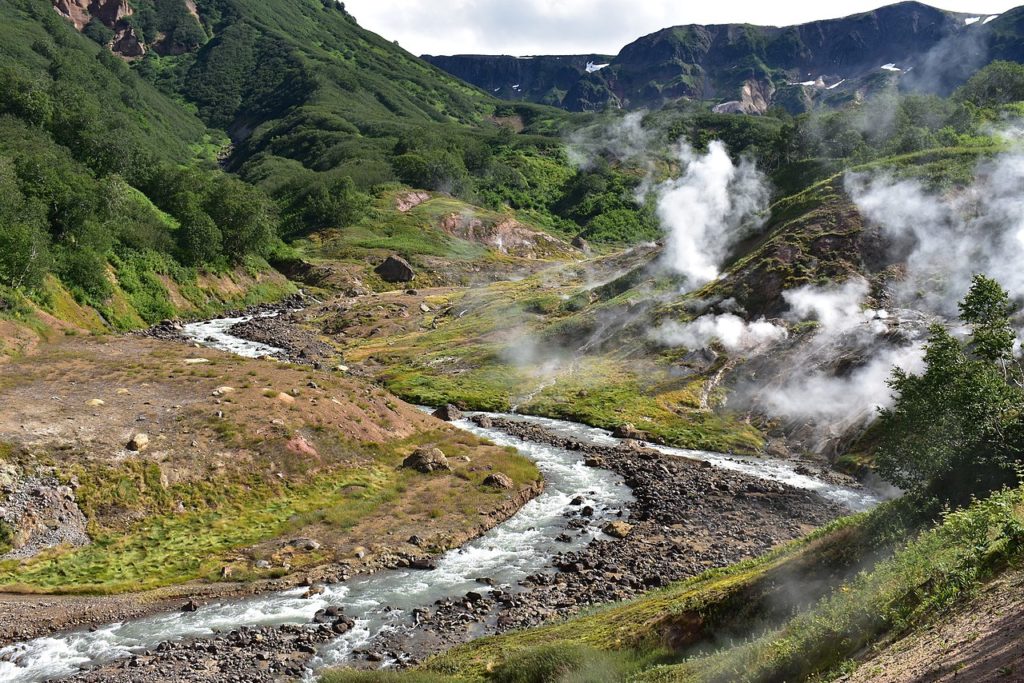
The valley of geysers is surrounded by diverse vegetation. There are mountain and tundra areas. Alder elfins covering mountain slopes and the surface of the watershed take up a dominant position. Also, you will be able to see a group of birch vegetation. Erosive slopes of the valley, rocky areas, and riverbeds of watercourses are almost deprived of it.
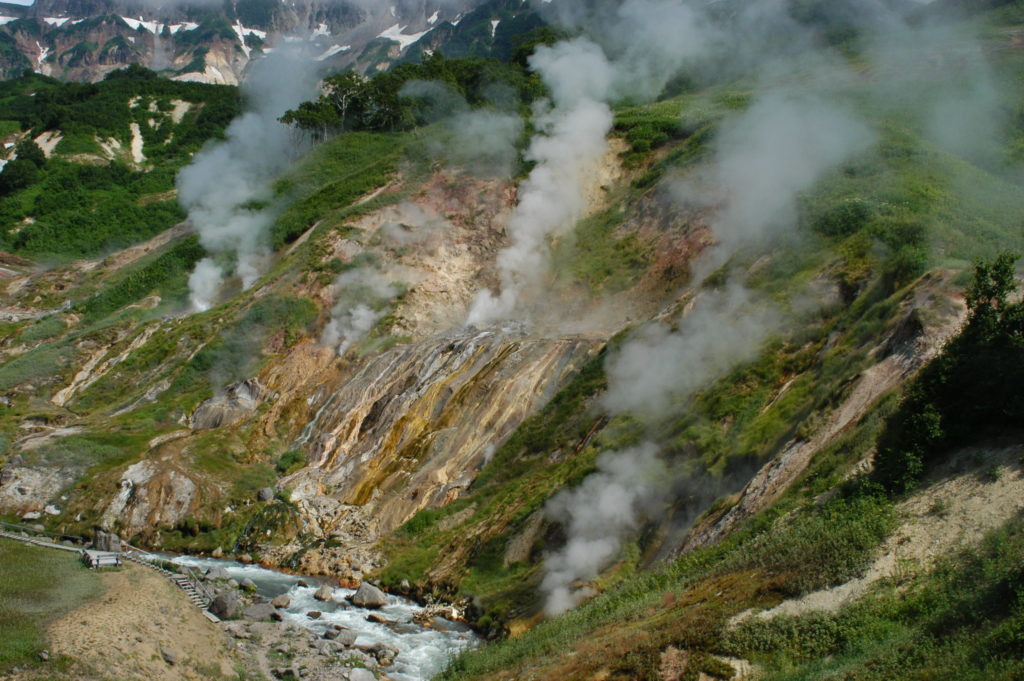
As a rule, tourists visit only the central part of the thermal field where there are the main geysers and safely paved paths. Foreign tourists were allowed into the valley in 1991. About 3,000 tourists visited the site annually.
According to Wikipedia/ kamchatkaland





